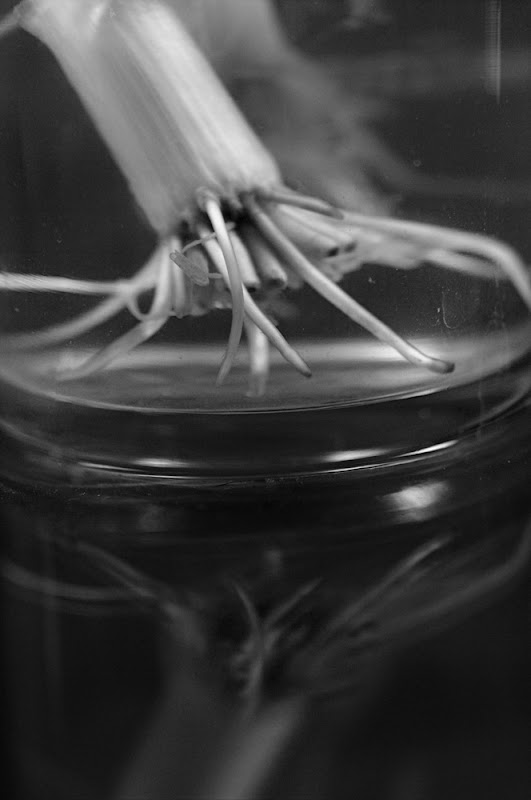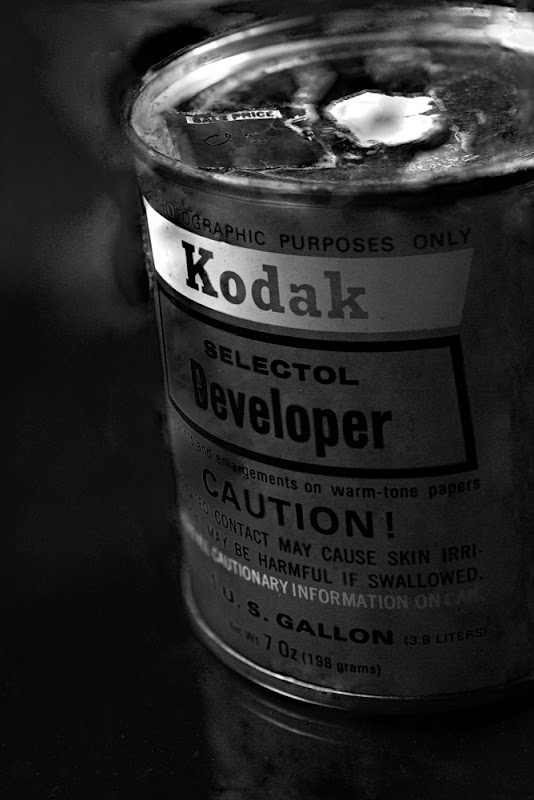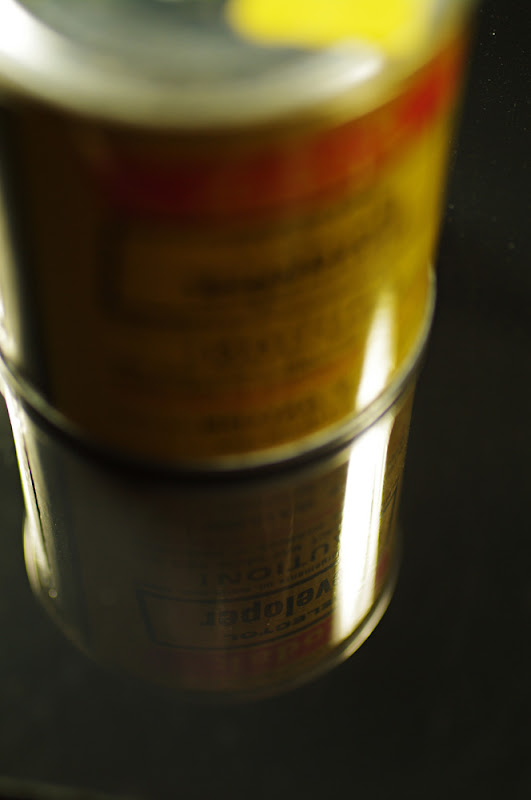My brother brought this Ganesha back from India for me some years ago. When I was doing the black on black assignment a few weeks ago, I picked this due to the few colors that could be manipulated for effect during monochrome conversion. Here is the photo I showed you on Sunday night:

I was asked how I obtained the mirror-like reflection. Clearly, this isn't a mirror. And that's correct. It's dusty. The dust does drive me bonkers, but I was cleaning the acrylic every object or every other object! IT showed dust well.
For the base, I used a sheet (a bit smaller than standard U.S. letter paper) made of dark, translucent acrylic with a glossy finish. Also, it has a mirror backing. The plastic is about as dark as an ND2 filter with a slight tobacco tint. The result is very pleasing as a mirror if you want an instantaneous dark complexion.
The technical advantage of this surface is that both the mirror and acrylic reflect the image, guaranteeing reflection blur and, in some images, creating a slight doubling. The effect should be nice and not too overpowering.
To give you some ideas of how this works, here is another image, first in the original color and then in two monochrome iterations.

For this first image, I slid the red slider far toward darkness. This added deep shadows. In fact, the shadows are almost unpleasant in their perfection. The yellow slider I moved slightly right to add some contrast.

Here I moved the red slider uncomfortably far toward light and made the yellows slightly darker. This almost makes the netsuke appear internally illuminated.

One advantage digital monochrome conversion affords photographers is the ability to creatively exaggerate monochrome effects. Neither of these effects could have been easily garnered with film and filters. Both took about 15 seconds (each) in Photoshop. So, that's a workflow improvement.
Tomorrow we'll look at this image, and some related ones:

Is it an alien from Roswell? Did it escape from Area 51? Will it walk around, haunting your nightmares until you find out what it is tomorrow?
No, maybe, and maybe, in that order.






























